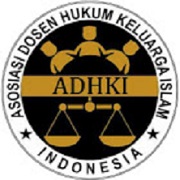Castal Punishment in the Perspective of Islamic Law
DOI:
https://doi.org/10.26618/jflic.v3i3.18032Keywords:
chemical castration, child sexual violence, Islamic law, takzir, maqashid shariaAbstract
This study aims to examine the application of chemical castration punishment to perpetrators of child sexual violence in Indonesia from the perspective of Islamic law. In Indonesia’s positive law, chemical castration is regulated in Law Number 17 of 2016 and Government Regulation Number 70 of 2020 as an additional penalty. The method used is a normative juridical approach with a qualitative research design. This study seeks to analyze the compatibility of chemical castration with the principles of Islamic law, focusing on whether it aligns with the maqashid al-sharia (objectives of Islamic law) and the core values of justice and fairness. The research findings suggest that chemical castration could be categorized as a form of takzir (discretionary punishment) in Islamic law, provided it does not conflict with the fundamental objectives of sharia, and that its implementation must adhere to the principles of proportionality and fairness. The research also critically assesses the broader implications of chemical castration, particularly from ethical, human rights, and legal perspectives. It delves into the ethical concerns of the medical profession regarding its implementation, highlighting the balance between upholding justice and respecting human dignity. Additionally, the study explores the views of contemporary Islamic scholars on the use of chemical castration as a punishment, assessing the debates surrounding its legitimacy in the context of Islamic jurisprudence. Ultimately, the study aims to provide a comprehensive understanding of the legal, ethical, and religious dimensions of chemical castration as a criminal penalty in Indonesia.
References
Abu Zahrah, M. (1958). Usul al-Fiqh. Dar al-Fikr al-ʿArabi.
Al-Bukhari, M. I. (1992). Shahih al-Bukhari. Dar Ibn Katsir.
Al-Ghazali, A. H. M. (2005). Al-Mustashfa fi Usul al-Fiqh. Dar al-Kutub al-ʿIlmiyyah.
Al-Mawardi. (2000). Al-Ahkam al-Sultaniyyah. Dar al-Kutub al-ʿIlmiyyah.
Al-Syanqity, M. A. (1995). Al-Adhwa’ al-Bayan fi Idhahi al-Qur’an bi al-Qur’an. Maktabah al-ʿUlum.
Auda, J. (2008). Maqasid al-Shariah as Philosophy of Islamic Law: A Systems Approach. International Institute of Islamic Thought.
Audah, ʿA. Q. (1996). At-Tasyriʿ al-Jina’i al-Islami. Dar al-Fikr.
Az-Zuhaili, W. (2011). Al-Fiqh al-Islami wa Adillatuhu. Dar al-Fikr.
BBC News Indonesia. (2019, September 3). Kebiri kimia pelaku kekerasan seksual anak: Kasus pertama di Indonesia. https://www.bbc.com/indonesia/indonesia-49557648
Friandy, B. (2017). Analisis konsep keadilan dalam hukum Islam. Jurnal Fikih dan Hukum Islam.
Indonesia. (2016). Undang-Undang Republik Indonesia Nomor 17 Tahun 2016 tentang Penetapan Peraturan Pemerintah Pengganti Undang-Undang Nomor 1 Tahun 2016 tentang Perlindungan Anak menjadi Undang-Undang.
Indonesia. (2020). Peraturan Pemerintah Republik Indonesia Nomor 70 Tahun 2020 tentang Tata Cara Pelaksanaan Kebiri Kimia.
Irawan, A. (2017). Hukum kebiri dalam Islam. Jurnal Hukum Islam Indonesia, 5(1), 45–60.
Komnas HAM. (2021). Pernyataan sikap terhadap kebiri kimia. https://komnasham.go.id
Kompas.com. (2021, December 17). IDI tolak terlibat dalam pelaksanaan kebiri kimia. https://www.kompas.com
Kompas.com. (2022, January 14). Kasus kebiri kimia di Banjarmasin, AM dihukum 20 tahun penjara. https://www.kompas.com
Kompas.com. (2023, July 11). Vonis kebiri kimia Baharuddin Kasim di Sulawesi Tengah. https://www.kompas.com
Kompas.id. (2021, October 10). Dian Ansori divonis kebiri kimia dan penjara 20 tahun. https://www.kompas.id
Muslim, I. (1994). Sahih Muslim. Dar Ihya al-Turath al-ʿArabi.
Nadlifah. (2017). Studi kritis atas kebiri dalam perspektif hukum Islam. Jurnal Hukum Islam.
Soekanto, S., & Mamudji, S. (2001). Penelitian hukum normatif: Suatu tinjauan singkat. Rajawali Pers.
Universitas Indonesia, Fakultas Hukum. (2022). Efektivitas kebiri kimia dalam perspektif hukum dan HAM. Fakultas Hukum UI.
Downloads
Published
Issue
Section
License
Journal of Family Law and Islamic Court © 2022 by JFLIC is licensed under CC BY-NC-SA 4.0
In the event that the article is received by the Editorial Team of Journal of Family Law and Islamic Court there is a decision to publish the article, the copyright of the article will be transferred to Journal of Family Law and Islamic Court.
Department of Ahwal Syakhsiyah, Faculty of Islamic Studies, Universitas Muhammadiyah Makassar as the publisher of Journal of Family Law and Islamic Court holds the copyright of all articles published in this journal.
Department of Ahwal Syakhsiyah, Faculty of Islamic Studies, Universitas Muhammadiyah Makassar holds the right to reproduce and distribute the article and author is not allowed to publish the same article published in this journal.
Statement of Authenticity and Manuscript Copyright can be downloaded: here
After filling in the statement letter, please send via e-mail: jflic@unismuh.ac.id











